Last year was the first time that I saw locally grown red Fresno chiles at our farmers's market. I bought a bunch and kept them in the vegetable bin, saying to myself that I’d make chile sauce with them. The chiles lingered for a month(chiles keep very well) until after Thanksgiving, when the #Srirachapocalyspe chile sauce shortage inspired me to make homemade Sriracha chile sauce
Instead of my usual homemade Thai Sriracha recipe, I tried one from Singapore. The reason is that I was curious about the Chinese imprint on a Southeast Asian-style chile sauce. That, at heart, is what drives many Singaporean dishes. I selected a recipe by Christopher Tan and Amy Van, the folks who authored the Chinese Heritage Cooking, the source of my old school rendition of sweet and sour pork.
Their recipe intrigued me because instead of palm sugar, they used Chinese rock sugar (sold at Chinese and Vietnamese markets in plastic bags or boxes). I think you can try subbing organic cane sugar and a touch of honey. And for the vinegar, it was unseasoned rice vinegar. Both of those ingredients are mellowing in nature and I wanted to see what they produced in a hot sauce. On the other hand, there were 10 cloves of garlic. Yowza.
The only caveat is that because of the cool temps in my home (about 65F), I let the chile and garlic mixture sit for 3 weeks on my counter to mellow out. The recipe, developed for Singapore’s equatorial climate, required a fermentation was about five days.
My locally grown Fresno chiles were really hot so I finessed the flavor with extra regular sugar. They were also very firm and dryish – not juicy and fleshy, so I strained the solids twice, adding extra water to remove more fiery goodness. I backed up my yield to the one in the recipe so I could get close to their flavor.
It took weeks to ferment – and maybe you could put it in a cold oven with the light on for a few days to hasten the process, but the finished Singaporean chile sauce had a bright heat and delicate sweetness. It raises the hairs in my nostrils whenever I taste it from a spoon or tip of a chopstick. The garlic wasn’t overpowering at all. It was a strangely elegant hot sauce.
The original recipe was titled “All-Purpose Chilli Sauce” but it’s very similar to the familiar Sriracha sauce, hence I’m tweaking the name here. Use a digital scale for precision.
How to use this sauce? I’ve been using this Singaporean Sriracha sauce as I would regular Sriracha. Chris and Amy suggest it as a table condiment, or dressing for noodles, and heating up sauces and fried rice. You get the point.
RECIPE
Singaporean Sriracha Sauce
Yields: 1 ⅓ cups (330 ml)
Ingredients:
- 12 ounces (350 g) Fresno chile or other moderately-hot red chiles
- 20 red Thai chiles
- 10 cloves garlic
- .8 oz (25 g) granulated sugar
- 1 tablespoon fine sea salt
- ¼ cup water, plus more as needed
- 1 ounce (30 g) yellow rock sugar
- 6 tablespoons (90 ml) unseasoned rice vinegar
Method:
- Wash and dry both kinds of chiles well, then dry thoroughly. Discard the stem but keep little green part that looks like a star. Coarsely chop, then put into a food processor. Add garlic. Process to a rough chopped texture. Add the sugar and salt, then pulse to combine.
- Transfer to a clean, glass jar. Cover with a piece of wax paper or loosely cover with plastic wrap. Set aside at room temperature for 4 to 5 days. Each day, stir with a clean spoon. The mixture should bubble slightly as it ferments. (After I kept mine for 3 weeks, the sweet heat mellowed nicely. The stuff didn’t spoil so you could keep for longer than 5 days.)
- Pour the fermented chile mixture into a saucepan. Add the water, rock sugar, and vinegar. Bring to simmer, and maintain that gentle cooking for 5 to 6 minutes. Off heat, taste and adjust the flavor with sugar, salt and vinegar – to get a hot, salty, and slightly sour flavor. Let cool completely.
- Puree in a blender until smoothie-like. Strain through a mesh strainer, pressing on the solids. You should have about 1 ⅓ cups. Stir in a little water and restrain, if needed. Store in a jar or bottle in the refrigerator.
Related posts:
- Hot Takeaways from the Rooster Sriracha Shortage (my spicy news analysis)
- Thai Sriracha Chile Sauce Recipe













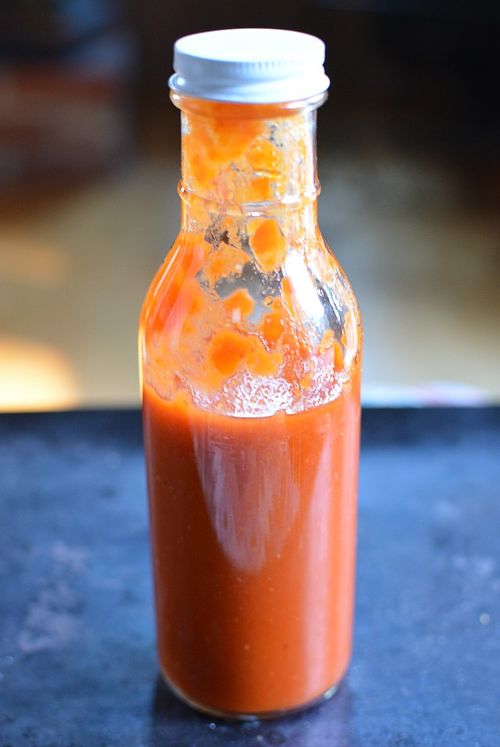
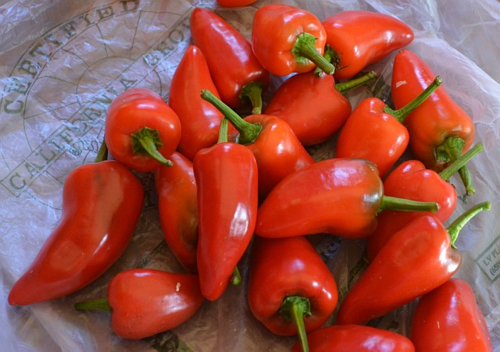
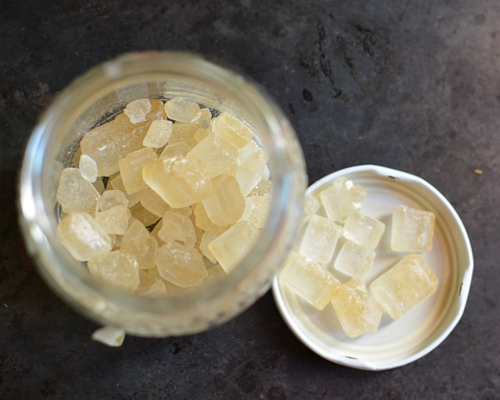
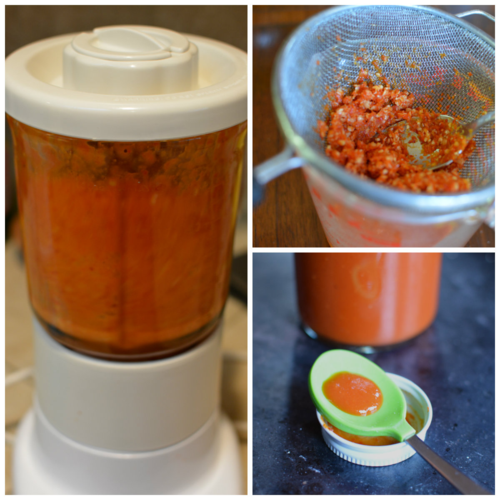


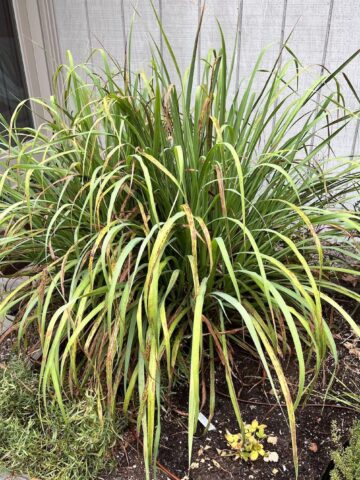
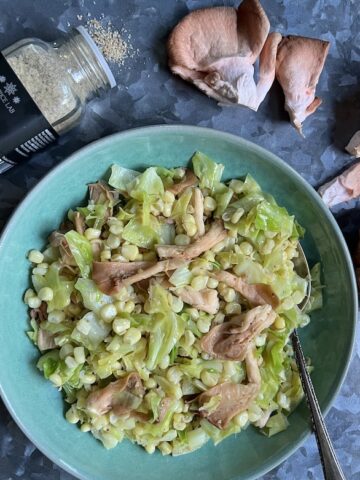
Candice says
Ooh yummy! Thanks for sharing the recipe. Although, I don't know if I have the patience to wait 5 days for it to ferment (I live in the Peninsula). haha!
Martin says
Andrea, I received the Indian Heritage Cooking from the same Singapore Heritage Cooking series that published the Chinese Heritage Cooking referenced above (That's a lot of Heritage!). I'm quite excited to try out some of the Indian recipes. Do you have or have you used the Indian edition? Is the Chinese edition worth buying?
Elizabeth says
Looks great. I live in Sydney Australia and at this time of year it will take no time at all to ferment.
Sophie says
Wow this is so awesome! I was just on a quest lately to try my hand at buffalo hot sauce from scratch. This sounds equally exciting, I'd love to start with fresh chiles! Thanks for the excellent advice. On my to-do list for asap 🙂
Sandra says
For Thai chiles, do you mean bird's eye chile (tiny, burning hot ones) or the bigger chiles?
david says
hello, this recipe calls for rice vinegar. your's called for distilled white vinegar. I always followed your recipe, but would apple cider vinegar be a problem to use? Also, I bought your making tofu book, because I wanted to explore fermenting it, but it didn't mention sprouting beans. would you leave a post on sprouting soybeans please?
Andrea Nguyen says
A little patience will pay off!
Andrea Nguyen says
Ooh, I want to get that Indian book. The Singaporeans love the word heritage. 😉
Andrea Nguyen says
For you, it will be no sweat.
Andrea Nguyen says
Yep, those are the ones, Sandra.
Andrea Nguyen says
This is a different recipe than the previous one, as I noted. Try both and see what you like.
I don't sprout soybeans for tofu making. Are you looking to ferment tofu or soybeans for tempeh? Tempeh is tricky and I've not done it.
Veena says
wow... unfortunately I dont get those thai chillies here in India...any substitutes ???
david says
so far. i have only made soymilk, but i think sprouting the beans first would make it more healthy. as for fermenting - non fermented soy has some health concerns. is it true that most asian soy recipes involve fermenting? anyway, i want to try it with tofu
Justina says
This is really cool. I love Asian food and landed here with a Google search. I just bought some Fresno peppers, but unfortunately they are from Mexico. I will have to watch out for them at my farmer's market and make this sauce. Yummy!
Can green Thai chiles be used in place or the red? Are they the same thing?
m says
i'm Singaporean and this sounds like a version (of many) of the chili sauce accompaniment to chicken rice. I personally find you calling this "Singaporean Sriracha" a little offensive. It's like me finding out about "Singaporean Noodles" here in the US-- normally rice vermicelli with curry powder. It is NOT Singaporean-- has never been served in Singapore, probably created by an immigrant cook who was looking for exotic name, and such a dish is not a representation of Singaporean cuisine. Same with Mee Hongkong, or Hong Kong Noodles. Sorry Andrea, I'm a fan of your website, just not your decision to call this "Singaporean". I wonder how I'd feel if a Singaporean concocted a chili recipe and called it "Singaporean Sriracha". I think I'd be ok with that. It's almost like a modern-day imperialism, via food.
Maybe what irked me is the lack of authenticity and your understanding of Singaporean cuisine? A bit of research would have shown you that your recipe is curiously close to chicken rice chili sauce. Hardly worth calling it sriracha unless it's because it pulls people in.
And this sentence "The reason is that I was curious about the Chinese imprint on a Southeast Asian-style chile sauce. That, at heart, is what drives many Singaporean dishes" made me cringe. You must be aware of the Chinese diaspora throughout SEA? What does a Southeast Asian-style chili sauce mean? You seem to narrow the whole plethora of chili sauces to one type-- Sriricha, that you have missed the complexity and diversity of Southeast Asian cuisine completely.
Andrea Nguyen says
I've read about the fermented soy but the folks heavily involved in that discussion are thinking mostly of soy sauce, miso or other fermented soy bean pastes, and tempeh. Asians who consume a lot of tofu -- Japanese, Chinese, Korean and Vietnamese -- are eating stuff made from soaked beans. I've seen that Wildwood has tofu made from sprouted beans but the texture of their products is too firm for my taste.
I imagine that it boils down to personal preference as I've not found tofu made from fermented beans to have much of an effect on my system.
Andrea Nguyen says
Try some other hot chile, Veena. I'm sure India has a wealth to play with.
Andrea Nguyen says
The green chiles may change the color a tad to be darker. They're simply unripened red chiles.
Andrea Nguyen says
Isn't Hainan chicken rice chile sauce a fresh one that's not fermented? It often contains fresh ginger. That's what I sampled from Tian Tian at the Maxwell Food Center on New Year's Eve. (A marvelous way to close out 2013.) Also, a fresh chile-ginger sauce is what I see in recipes for Singaporean chicken rice. Sometimes, there's a little stock (poaching liquid) blended in too. Love that sauce with chicken rice.
While in Singapore, I met up with Christopher Tan (the author of the recipe). He's written extensively about Singaporean food and is a well-recognized, respected expert in Singapore. We discussed this chile sauce recipe of his. Without me saying so, he said, "It's like Sriracha." He further said that many hawkers sadly no longer make their own chile sauce and buy it; late in the evening when the sauce is low, they dilute it a bit to stretch the last bits.
Please note that the recipe came from Chris and Amy Van's book, "Chinese Heritage Cooking," which is part of a series called "Singapore Heritage Cooking." I saw the book sold at Changi Airport. Given that, there is proof that the sauce is Singaporean. I wouldn't make up information like this.
In the U.S., much of what people know about Southeast Asian chile sauces is currently defined by Sriracha. The method that Chris outlined in this recipe is similar to that of Thai Sriracha. To encourage folks to try it out, I wanted to make a connection.
You are lucky to be Singaporean as there's a wealth of lovely food to be had. Thanks for the conversation.
Sophie says
Andrea thanks so much for this recipe! I have had such fun making my own sriracha. Our home is a bit cool in the winter months so I let it ferment for about 4 weeks... then one day the sun came out and the little jar was bubbling away! I tasted the mixture most days after stirring it, and didn't think it was particularly spicy. But after blending and straining (I skipped the cooking step, I guess because I already liked the way it tasted) it is super-spicy! Quite hot indeed. I love it. I wouldn't say it was more cost-effective than purchasing a bottle, but way more fun and I will do it again once this batch is consumed!